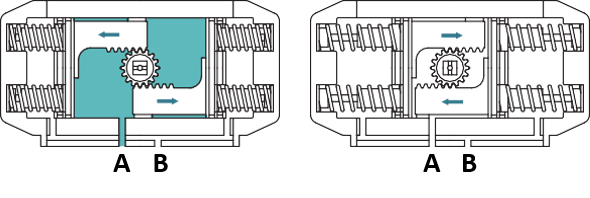Pneumatic actuated ball valves are key parts in fluid control systems. They’re known for their efficiency and flexibility. Powered by compressed air, these valves are ideal for various applications in multiple industries. In this guide, we will clarify how pneumatic actuated ball valves operate and their benefits.
KEY COMPONENTS :
A pneumatic actuated ball valve has two major parts: the ball and the actuator. The ball, often made from metal or a sturdy material, has a hole that can either let fluid through or block it. The actuator, which uses compressed air, rotates the ball.
HOW IT WORKS :
- Open Position:
- The ball aligns with the pipe, allowing fluid to pass.
- When the actuator gets a signal, it expands or contracts due to compressed air.
- Actuation:
- The actuator’s movement rotates the ball by 90 degrees, moving it from open to closed.
- Closed Position:
- The ball blocks the pipe, stopping fluid from passing.
ADVANTAGES :
- Quick Response: These valves can open and close quickly, which is useful in applications needing rapid fluid control.
- Reliability: The use of compressed air makes these valves both consistent and dependable.
- Simple Design: Fewer mechanical parts mean less chance of failure and easier maintenance.
- Durability: The materials, like stainless steel, make these valves long-lasting.
WHERE THEY’RE USED :
- Industrial Automation: For precise fluid control in manufacturing.
- Water Treatment: For regulating water and chemical flows.
- Oil and Gas: Vital for control and shut-off in pipelines.
- HVAC Systems: Used in air and fluid regulation.
CONCLUSION :
Understanding pneumatic actuated ball valves is crucial for anyone in the fluid control sector. These valves provide fast and reliable control, all driven by compressed air. Their straightforward design and durability make them indispensable in many industries. So, whether you’re aiming for precise control in manufacturing or efficient shut-off in pipelines, these valves are reliable solutions.
 Air to port A forces the pistons outwards, causing the springs to compress, The pinion turns counterclockwise while air is being exhausted from port B.
Air to port A forces the pistons outwards, causing the springs to compress, The pinion turns counterclockwise while air is being exhausted from port B.